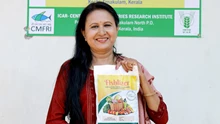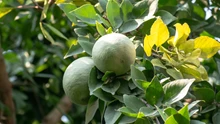
Ghee, often revered as a golden elixir in culinary and Ayurvedic traditions, undergoes a meticulous journey from raw ingredients to the final product. Whether crafted through time-honored traditions or innovative industrial processes, the essence of ghee lies in its purity and quality. Let us understand the intricate world of ghee manufacturing, exploring both the traditional and advanced methodologies. Read On.
The Traditional Vedic Approach: A Ritualistic Journey
In the heart of traditional ghee production lies the Vedic method, a five-step process deeply ingrained in Ayurvedic wisdom. Each step, known as a sanskar, contributes to the alchemy of creating the finest quality ghee.
Step 1: Procurement and Boiling
The journey commences with the careful selection of raw materials, where the quality of milk is paramount. Opting for grass-fed cow’s milk, enriched by nature's bounty, sets the foundation for premium ghee. Through meticulous boiling, not only is the milk disinfected, but its texture is also enriched, paving the way for concentrated goodness.
Step 2: Curdling
Transforming boiled milk into curd marks the next phase. A touch of tradition is added as curdling agents, whether curd or natural souring agents like lemon juice, orchestrate the overnight conversion into curd. Once ripened, the curd is churned to unveil its buttery essence.
Step 3: Churning
Enter the wooden churner, the Bilona, guiding the curd through a rhythmic dance of clockwise and anticlockwise motions. This laborious process extracts the butter, the precursor to ghee, from its creamy cocoon.
Step 4: Separating
As the churning crescendos, butter and buttermilk gracefully part ways. The butter, still veiled by remnants of milkiness, undergoes a transformative journey towards ghee.
Step 5: Heating
In the final act of metamorphosis, the golden butter is tenderly cradled in a steel pot, where gentle heat coaxes out its essence. Through a slow dance with flames, water evaporates, solids settle, and the unmistakable aroma of pure cow ghee permeates the air. A golden hue heralds the journey's end as the liquid gold is carefully filtered, ready to grace kitchens with its divine essence.
Exploring Advanced Methods in Ghee Manufacturing
While traditional methods hold a cherished place in homemade ghee production, the demands of commercial ventures have spurred the development of advanced techniques. Here, we get into four professional ghee manufacturing processes that have revolutionized the industry, offering efficiency and quality on a larger scale.
Direct Cream Method: It utilizes specialized kettles equipped with steam-heated jackets and cream. Vigilant monitoring ensures the moment of perfection, signaled by a golden hue and tempting aroma. While boasting efficiency, this method necessitates prolonged cooking times and may risk caramelized flavors from serum solids.
Creamery Butter Method: Embraced by organized dairies, the method upholds standards of excellence. Beginning with unsalted milk butter, its process unfolds with meticulous precision. Through controlled heating and steam infusion, butter transforms into ghee, accompanied by the unmistakable aroma of culinary delight. Vigilant skimming ensures purity, while final filtration heralds the culmination of a journey marked by precision and quality.
Pre-Stratification Method: In the hunt for unparalleled purity, the Pre-Stratification Method is a pinnacle of precision. Starting with butter derived from matured cream, meticulous stratification separates impurities from pristine fat. Through careful heating, the essence of ghee is coaxed forth, offering a milder flavor profile and unparalleled aroma. This method ensures that only the purest essence of ghee graces the final product, captivating palates with its unmatched quality.
Continuous Method: It is all about efficiency and innovation, addressing the demands of high-volume production. Overcoming the limitations of batch processing, this method offers superior control over quality and reduced handling losses. Through a series of precisely orchestrated steps, butter is transformed into ghee with unparalleled efficiency and purity. From heating to clarification, every stage is meticulously controlled, ensuring a product of unparalleled quality.
While creating ghee, tradition and innovation intertwine, each offering its unique blend of quality and efficiency. Whether through time-honored rituals or cutting-edge technology, its essence remains unchanged.










